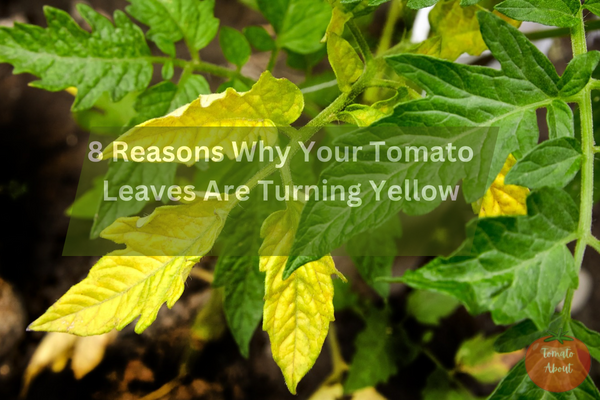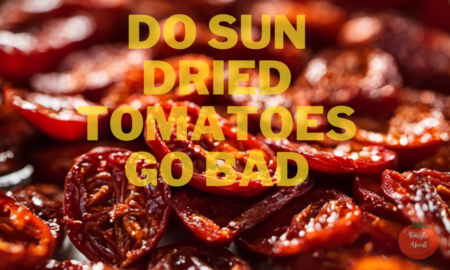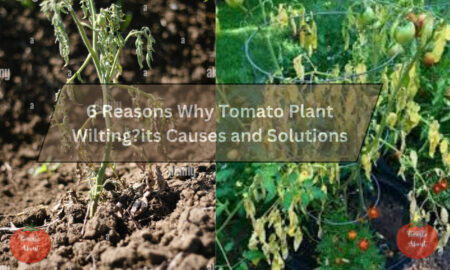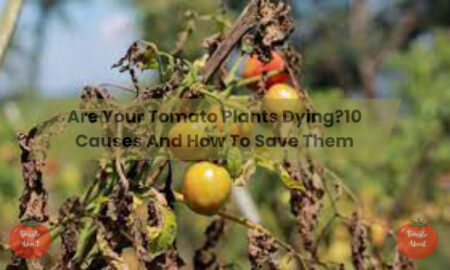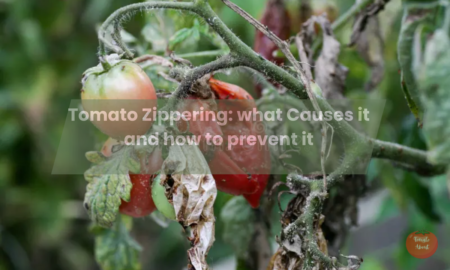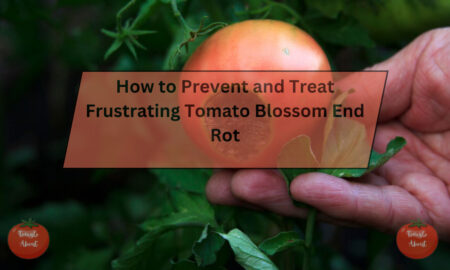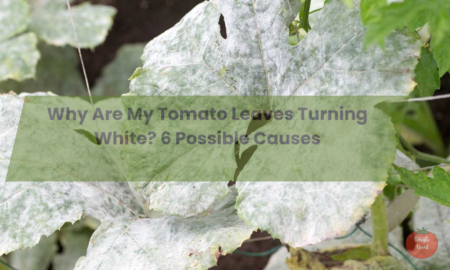It’s midsummer and your tomato plants are overloaded with green fruit – you can practically taste the homemade salsa and pasta sauce! But then you notice some of the leaves are starting to turn yellow. Your first reaction is panic. Are your beloved tomato plants in trouble? What do yellowing leaves mean, and what should you do about it?
Take a deep breath gardener. While yellowing leaves on tomatoes can be alarming, it’s a common issue that even experienced tomato growers deal with. The causes range from harmless to problematic, but yellowing leaves can often be fixed with a few easy adjustments to your care routine. Armed with the right information, you can diagnose the problem and get your plants back to normal.
In this article, we’ll walk through the top causes of yellow tomato leaves and the steps you can take to fix them. With a little detective work, you’ll have your plants healthy again and producing bountiful tomatoes once more.
So, Why are my tomato leaves turning yellow?
Tomato leaves often turn yellow due to inconsistent watering, diseases like blights or wilt, nutrient deficiencies, transplant shock, or simply natural aging. Identify the cause by inspecting plants and growing conditions, then make adjustments to care. Address diseases immediately and fertilize plants if needed.
Let’s discuss the reasons behind it!
1)The Seed Leaves Turn Yellow – Don’t Worry, It’s Normal!
If you notice the first set of leaves that emerge after seed germination are yellowing, there’s no need for concern. These first leaves are called the cotyledons or seed leaves, and it’s natural for them to turn yellow and drop off as the plant matures. The seed leaves rely on the energy stored in the seed to emerge initially and are not as efficient at photosynthesis as the true leaves that develop later.
While the sight of yellow leaves can be worrying for new gardeners, rest assured this is part of your plant’s natural development. The seed leaves have done their job, so the plant allows them to die off in order to focus its energy on new growth. As long as the true leaves above the cotyledons remain green and healthy, your plant is right on track.
2. Inconsistent Soil Moisture Stresses Plants
The number one cause of tomato leaves turning yellow is inconsistent moisture levels in the soil, either from under-watering or over-watering. Tomato plants thrive when they receive a steady supply of water over the growing season. When the soil moisture fluctuates wildly between very wet and bone dry, it stresses out the roots.
Over-watering can lead to root rot as the saturated soil suffocates the roots and promotes fungus. Damaged roots cannot properly uptake nutrients and transport them to the leaves. Underwatering causes the leaves to wilt, curl, and yellow due to lack of moisture.
The fix is diligent watering practices. Check the soil daily and only water when the top few inches are dry. Give plants a deep soak to saturate the whole root zone. Avoid watering leaves. Add mulch to maintain moisture between waterings.
If you find overwatering was the issue, cut back on watering frequency. For under-watered plants, give them a thorough soak and watch them perk back up within a day or two. Steady soil moisture prevents wild swings in wetness.
3. Compacted Soil Prevents Oxygen From Reaching the Roots
Another common cause of tomato leaves yellowing is overly compacted soil that prevents air from reaching the roots. Tomato plant roots need access to oxygen in the surrounding soil. However, walking on garden soil, excessive rain, and certain dense soil types can all lead to compaction.
When soil becomes too compacted, it blocks air from penetrating into the root zone. Without proper aeration, the roots essentially suffocate due to lack of oxygen. Roots deprived of oxygen cannot adequately take up nutrients and transport them to the leaves. This lack of nutrients then causes the leaves to turn yellow.
Raised beds are a good solution to avoid soil compaction issues. Adding compost to dense soils also improves drainage and aeration.
If you find compaction was the problem, try gently loosening the top few inches of soil without harming roots. Avoid walking on the beds, and mulch to reduce compaction.
4. Transplant Shock While Young Plants Adjust
If you recently transplanted your tomato seedlings from indoors or the greenhouse into the garden bed, yellowing leaves near the bottom of the plant could simply be transplant shock. Moving young tomato plants from ideal controlled settings indoors to varied outdoor growing conditions is quite a significant change.
Some stress and yellowing of the lower leaves is normal at first as the young transplant adjusts to its new environment. As long as the new growth emerging from the top of the plant still looks healthy, the yellow lower leaves are just part of the short acclimation period and are nothing to worry about.
To reduce transplant shock, harden off plants for 7-10 days beforehand. Also, wait to transplant until nighttime lows are constantly above 50°F. Handle seedlings gently when moving them.
5. Diseases Cause Leaf Spots, Wilting, and Yellowing
While environmental factors cause many tomato leaf issues, plant diseases are also a very common cause of yellowing leaves. Several fungal and bacterial tomato diseases lead to leaf yellowing, often alongside leaf spots and wilting. Some common disease culprits that can cause yellowing leaves are early blight, Septoria leaf spot, verticillium wilt, fusarium wilt, and bacterial wilt. Viral diseases like tomato mosaic virus can also cause yellow mottling and spotting on leaves.
If you suspect any disease, then remove and destroy the affected plants immediately to prevent further contamination. Never compost diseased tomato plant material as it can harbor pathogens. Prevention is keyspace plants appropriately, buying resistant varieties, diligently cleaning tools, rotating crops, and applying preventative fungicides/bactericides as needed.
6. Nutrient Deficiencies Deprive Leaves of Important Nutrients
A lack of key macronutrients and micronutrients in the soil can also be a source of yellowing tomato leaves. The major plant nutrients that are most likely deficient, if leaves start turning yellow, are nitrogen and magnesium. Nitrogen is critical for vigorous leaf growth and the production of chlorophyll, which gives leaves their green color.
When nitrogen levels run low in the soil, the oldest, lower leaves will turn yellow first. Magnesium and some other micronutrients help form chlorophyll in order to carry out photosynthesis. Without enough of these micronutrients, the leaves turn yellow while the veins remain dark green. This condition is called chlorosis.
Before adding any fertilizers, test your soil to identify current nutrient levels. Address deficiencies based on soil test results. Use a balanced organic fertilizer, or specific amendments (like Epsom salts for magnesium). Mild cases often respond to compost and mulch.
7. Normal Leaf Yellowing and Drop as Season Progresses
It is important to keep in mind that tomato plants naturally start dropping some of their older, lower leaves and slowing their overall growth as they reach the end of their lifespan in late summer and fall. A small amount of yellowing and leaf drop during August through October is perfectly normal and nothing to be concerned about, especially once the plant has reached peak fruit production.
During this period, The plant is actually focusing its energy on ripening existing fruit rather than producing new growth. Removing spent leaves allows the plant to channel energy into the tomatoes rather than trying to keep decrepit leaves alive.
As long as your plant looks healthy otherwise, with no major leaf spotting or extensive wilting, some yellowness at season end is normal. Continue caring for the plant through the first light frost then clean up the garden to prep for next year.
8. Other Stressors Like Weather, Pests, and Physical Damage
While the above reasons are most common, other stressors can also cause tomato leaf yellowing like:
- Hot weather over 90°F that scorches leaves
- Cool nighttime temps below 55°F that hinder growth
- Harsh pruning or mechanical damage that shocks the plant
- Pests like hornworms that eat leaves
- Root-knot nematodes that stunt roots
- Herbicide drift from nearby lawns
So take note of recent weather, inspect closely for pests, and check roots for damage if yellowing occurs for unknown reasons. Remove stresses and treat issues as soon as possible.
The Next Steps to Fixing Your Yellow Leaved Tomatoes
If those tips didn’t help pinpoint the cause of your yellow tomato leaves, don’t panic! Here are some next steps:
- Take a closer look at the yellowing pattern – where on the plant are the leaves yellowing? Bottom, top, scattered? Look for clues!
- Assess recent weather – were there any temperature swings or heavy rains?
- Inspect the soil – is it draining well or compacted? Check soil moisture too.
- Search thoroughly for signs of pests like hornworms, flea beetles, or mites. Look on the undersides of the leaves.
- Check young roots for root-knot nematode damage. Healthy roots should be firm and white.
- Contact your local university agricultural extension office – they can help diagnose issues.
- Try removing some yellowed leaves to see if it slows spreading – this sometimes buys time to identify the real problem.
- If needed, send a sample of the affected plant to a plant diagnostic lab for expert identification.
- As a last resort, pull out diseased plants to keep issues from spreading. Healthy tomatoes can still be saved!
Frequently Asked Questions
Why are only the lower leaves on my tomato plant turning yellow?
When the lowest, oldest leaves on the plant yellow first, it’s typically a nitrogen deficiency, early blight, or fusarium wilt. Address nutrition issues. Remove diseased plants promptly.
I recently transplanted my tomato seedlings and now the leaves are yellow – what should I do?
Yellow lower leaves after transplanting are common and indicate transplant shock. Allow 1-2 weeks for plants to adjust. Remove damaged leaves to focus energy elsewhere.
My tomato leaves have yellow spots – is this a disease?
Yellow leaf spotting is often caused by septoria leaf spot fungal disease. Act quickly to remove and destroy affected plants before spores spread
Wrapping up!
I hope this guide gave you some helpful troubleshooting tips to decipher the meaning behind yellow tomato leaves in your garden. While yellowing leaves can look concerning at first, take time to assess the plant and growing conditions to identify the probable cause. Address any environmental issues that need improvement. Remove diseased plants immediately to prevent spread.
With a little TLC, your plants can bounce back from yellowing leaves! Trust me, once you figure out the root cause and treat it, you’ll start seeing happy, healthy green tomato foliage again soon.

